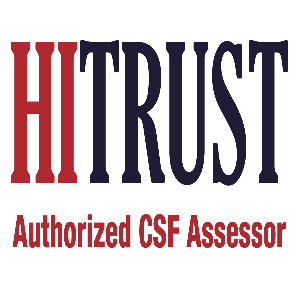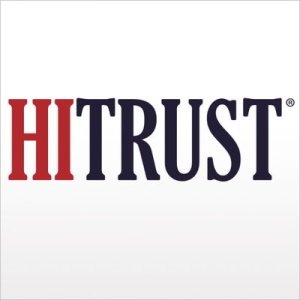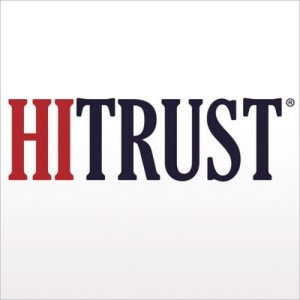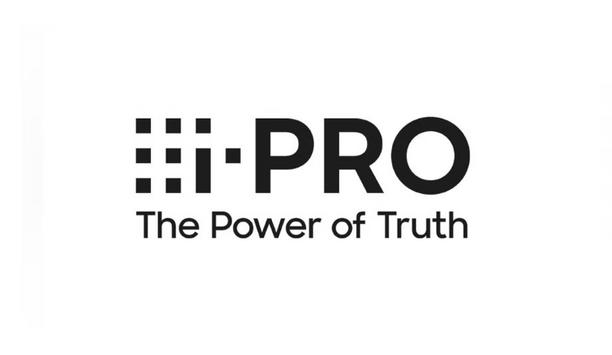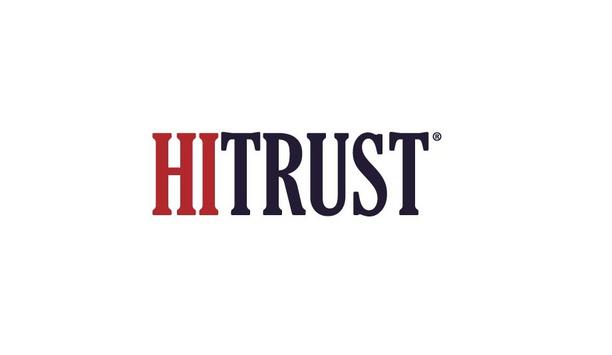HITRUST - Experts & Thought Leaders
Latest HITRUST news & announcements
“Ask any security vendor how cybersecure their solutions are, and you’ll most likely be told ‘it’s great’, but how can we objectively measure the relative cyber-worthiness of a network device? Just ask the experts,” says Will Knehr, Senior Manager of Information Assurance and Data Privacy at i-PRO Americas, Inc. Cyber-resilient network security With the ever-increasing rise in cybercrime, i-PRO Americas Inc., a global pioneer in professional security solutions for surveillance and public safety, is advocating for companies to install more cyber-resilient network security devices. According to Knehr, organisations need to look no further than the U.S. National Institute of Standards and Technology (NIST) for expertise. More specifically, NIST’s IT laboratory regularly publishes its Federal Information Processing Standards (FIPS) which define the security requirements for cryptographic modules to ensure computer security and interoperability for U.S. government agencies and contractors. How FIPS protects cybersecurity FIPS represents an evolving list of standards that IT and security professionals can monitor and adapt FIPS was created in part by merging cyber best practices from many other technical groups like the American National Standards Institute (ANSI) and the Institute of Electrical and Electronics Engineers (IEEE) as well as the International Organisation for Standardisation (ISO) to name a few. When an organisation says they are FIPS certified at a certain level, it’s possible to know exactly how cyber secure they are. And because technology changes quickly and new exploits are found, FIPS represents an evolving list of standards that IT and security professionals can monitor and adapt over time. Federal funding While FIPS compliance ensures protection for any IoT device installed in a business, it is particularly important for any organisation that receives federal funding, either directly or indirectly. This also includes state, local, and education procurement (SLED) markets. Cyber best practices Additionally, FIPS is considered a part of cyber best practices by other frameworks and policies such as Criminal Justice Information Services (CJIS), the healthcare industry’s HITRUST framework, and more recently, the StateRAMP standards that many U.S. States are adopting. In general, any IT department that has been asked to build their environments in a compliant framework with NIST is effectively following the security requirements laid out in the FIPS publication. The Secure Element A secure element is small, fast, more secure, and more easily deployable in edge devices Part of the state-of-the-art behind protecting IoT devices, like network cameras, is utilising a secure element. A secure element is a tamper-resistant integrated circuit chip that can be used to generate and store cryptographic keys. Unlike a Trusted Platform Module (TPM) which can be used similarly, a secure element is small, fast, more secure, and more easily deployable in edge devices. EdgeLock secure element For example, i-PRO uses the EdgeLock secure element, and a set of FIPS-compliant encryption algorithms are preloaded and configured within the secure element, enabling it to generate secure cryptographic keys from within the camera. By providing a secure platform for storing and processing this sensitive data, the secure element helps to protect users from a wide variety of attacks and tampering. Secure open platform approach Another benefit of utilising a secure element is its ability to lock third-party apps too. This enables a secure open platform approach where third-party plugins can be installed on a camera without concern that they might compromise its cybersecurity. It's worth mentioning that not every camera contains a secure element, and some manufacturers charge extra for models that include them. Some vendors also charge to install third-party certificates too. So, it’s good practice to add this capability to any “must-have list” of features when evaluating products. Approved encryption algorithms When it comes to cybersecurity, it’s important to rely on facts from a third-party organisation" “When it comes to cybersecurity, it’s important to rely on facts from a third-party organisation with groups of peer-reviewed data scientists and mathematicians whose sole focus is to think about security all day, every day,” says Knehr. “FIPS represents a curated collection of approved encryption algorithms that can ensure that network devices are secure. A secure element chip is the best way to deploy FIPS in any IoT device.” Conclusion Knowing if a network device is cybersecure doesn’t need to be a dark art. Due to NIST, i-PRO has a free resource that is available to anyone who wants to ensure a product meets the requirements of the U.S. government and its agencies. “If it’s good enough for the FBI, NSA, and the DOD, it’s probably good enough for your business and customers,” comments Knehr. As part of the i-PRO’s commitment to cybersecurity, all of the company’s AI cameras utilise a tamper-proof secure element chip to generate and store cryptographic FIPS algorithms used to authenticate access to the device.
HITRUST announced the general availability of the HITRUST Results Distribution System (RDS) to make it easier and more efficient to collect, inspect, export, and act upon findings in a third-party information assurance report. The current system of sharing and consuming third-party assurance reports is antiquated and highly inefficient. Third-party risk management (TPRM) system Vendor risk managers are encumbered with mundane and time-consuming tasks in reviewing existing reports, in order to identify relevant information and, in many cases, are unable to capture information into a third-party risk management (TPRM) system for tracking and further analysis. “Today, we receive assessment reports in PDF format and dedicate a significant amount of resources to collecting and reviewing the contents,” said Gerald Greeley, the Chief Information Officer at Lawrence General Hospital, adding “Eliminating or greatly reducing those tasks will free up resources to better manage vendor risk.” Results Distribution System (RDS) Results Distribution System (RDS) allows assessed entities to share their assessment results securely Results Distribution System (RDS) allows assessed entities to share their assessment results securely and electronically with designated relying parties, who can seamlessly locate and review key aspects of the assessment results, such as date, scope, control requirements, scores, and corrective action plans, through the RDS portal or integrated into their own TPRM System via API. There is no longer a need for risk analysts to manually review assessment results and extract relevant information from PDFs, so resources are freed up for more strategic activities. RDS eliminates the need to search through huge PDF files that are static and difficult to use. HITRUST assessment carried out by single assurance eco-system “Since every HITRUST assessment is performed leveraging a single assurance eco-system, we’re uniquely positioned to enable and support the secure and seamless exchange and consumption of assessment results,” said Kevin Charest, the Executive Vice President and Chief Technology Officer at HITRUST. RDS is the latest example of HITRUST innovation that improves the overall user experience, supporting information risk management and compliance, while establishing leadership in the quality and reliability of assessment results. Advanced analytics with configurable dashboards In the second half of 2022, HITRUST will release additional RDS enhancements that offer advanced analytics with configurable dashboards, monitoring notifications, and expanded API integration for use with TPRM and other systems. “RDS is a monumental innovation from HITRUST that fundamentally changes how assurance is provided at scale between customers and their vendors,” said Cliff Baker, the Chief Executive Officer (CEO) of CORL Technologies, adding “It will not just allow us to more efficiently support our customers but enable better analytics and insights through the CORL TPRM Platform.” Jeremy Fisher, the Vice President of Product at Archer (Archer Integrated Risk Management), said “For third-party risk management systems to achieve their full potential in helping organisations manage their vendor risk, assessment results need to be electronically shared and consumed. HITRUST’s results distribution system is a big step in making that possible and will be a strong complement to our focus on vendor interaction through Archer Engage. “
HITRUST announced it is addressing the need for a continuously-relevant cybersecurity assessment that aligns and incorporates best practices and leverages the latest threat intelligence to maintain applicability with information security risks and emerging cyber threats, such as ransomware. The design and selection of the controls for the HITRUST Implemented 1-year (i1) Assessment puts it in a new class of information security assessment that is threat-adaptive and designed to maintain relevance over time as threats evolve and new risks emerge while retiring controls no longer deemed material. HITRUST i1 Assessment HITRUST identifies information security controls relevant to mitigating known risks Most existing assessment approaches are not designed to keep pace with current and emerging threats; those that do, rely heavily on broad control requirements raise questions about the suitability of control and consistency of review that ultimately impact the reliability of results. In contrast, HITRUST identifies information security controls relevant to mitigating known risks and leverages cyber threat intelligence data to influence the selection and where necessary, updating of technically-focused HITRUST CSF requirements included in the HITRUST i1 Assessment. As a result, the HITRUST i1 Assessment includes controls selected to address emerging cyber threats actively. Reliable assessment with compliance “The HITRUST i1 Assessment is unique in both selection of controls and the design of its assurance programme. Effort towards completion is comparable to other moderate assurance vehicles while delivering a higher level of reliability,” said Jeremy Huval, HITRUST Chief Innovation Officer. The HITRUST i1 Assessment is the first information security assessment of its kind with attributes not available through other assurance programs: Designed to maintain relevant control requirements to mitigate existing and emerging threats and provide updates as new threats are identified (It is threat-adaptive, prescriptive, and focused on controls pertinent to risk). Designed to sunset controls that have lost relevance and have limited assurance value based on the effort required to comply or assess. Its unique control selection and assurance program design delivers a higher level of reliability than other moderate assurance options. The level of time and effort to complete is comparable to other moderate assurance options in the market. Offers a forward-looking, 1-year certification. As the HITRUST i1 was designed around relevant information security risks and emerging cyber threats, it is not surprising it provides coverage for numerous standards, such as NIST 800-171, GLBA Safeguards Rule, HIPAA Security Rule, and Health Industry Cybersecurity Practices (HICP). Review and evaluation HITRUST will evaluate security controls and review threat intelligence data no less than quarterly HITRUST will evaluate security controls and review threat intelligence data no less than quarterly, and for each subsequent major and minor release of the HITRUST CSF, to ensure the HITRUST i1 Assessment requirement selection remains relevant. Guidance documents will also drive enhancements to the HITRUST CSF and HITRUST i1 Assessment control sets as needed. Webinar While the HITRUST i1 Assessment is intended to adapt and evolve to maintain relevance, it’s important to note that HITRUST i1 Assessment certified organisations will not be impacted by changes to the HITRUST i1 Assessment control requirements until their next HITRUST assessment cycle. HITRUST is hosting a webinar at 11 a.m. CT on Thursday, February 3, 2022, discussing the HITRUST Implemented 1-year (i1) Assessment in more detail.
Maximising security and performance
DownloadGuide for HAAS: New choice of SMB security system
DownloadSecurity practices for hotels
DownloadAccess control system planning phase 2
DownloadThe key to unlocking K12 school safety grants
Download


